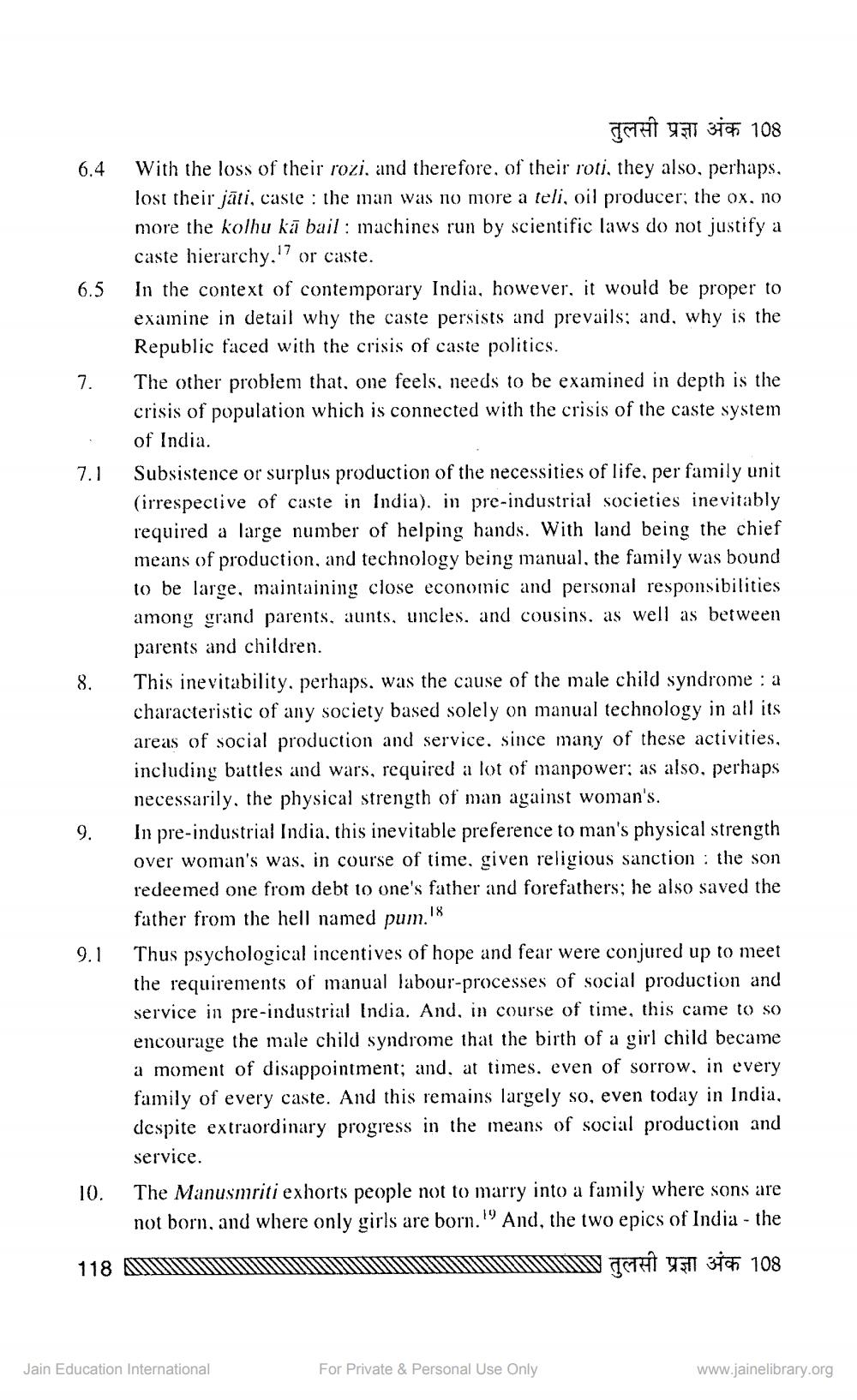________________
6.4
6.5
7.
8.
SAT 9311 31 108 With the loss of their rozi, and therefore, of their roti, they also, perhaps, lost their jāti, caste: the man was no more a teli, oil producer; the ox, no more the kolhu kā bail : machines run by scientific laws do not justify a caste hierarchy.!? or caste. In the context of contemporary India, however, it would be proper to examine in detail why the caste persists and prevails; and, why is the Republic faced with the crisis of caste politics. The other problem that, one feels, needs to be examined in depth is the crisis of population which is connected with the crisis of the caste system of India. Subsistence or surplus production of the necessities of life, per family unit (irrespective of caste in India). in pre-industrial societies inevitably required a large number of helping hands. With land being the chief means of production, and technology being manual, the family was bound to be large, maintaining close economic and personal responsibilities among grand parents, aunts, uncles, and cousins, as well as between parents and children. This inevitability, perhaps, was the cause of the male child syndrome : a characteristic of any society based solely on manual technology in all its areas of social production and service. since many of these activities, including battles and wars, required a lot of manpower; as also, perhaps necessarily, the physical strength of man against woman's. In pre-industrial India, this inevitable preference to man's physical strength over woman's was, in course of time, given religious sanction: the son redeemed one from debt to one's father and forefathers; he also saved the father from the hell named pum.18 Thus psychological incentives of hope and fear were conjured up to meet the requirements of manual labour-processes of social production and service in pre-industrial India. And, in course of time, this came to so encourage the male child syndrome that the birth of a girl child became a moment of disappointment; and, at times, even of sorrow, in every family of every caste. And this remains largely so, even today in India, despite extraordinary progress in the means of social production and service. The Manusmriti exhorts people not to marry into a family where sons are not born, and where only girls are born." And, the two epics of India - the
9.
9.1
10.
118 M
ill
M
V
OH 4311 310h 108
Jain Education International
For Private & Personal Use Only
www.jainelibrary.org




